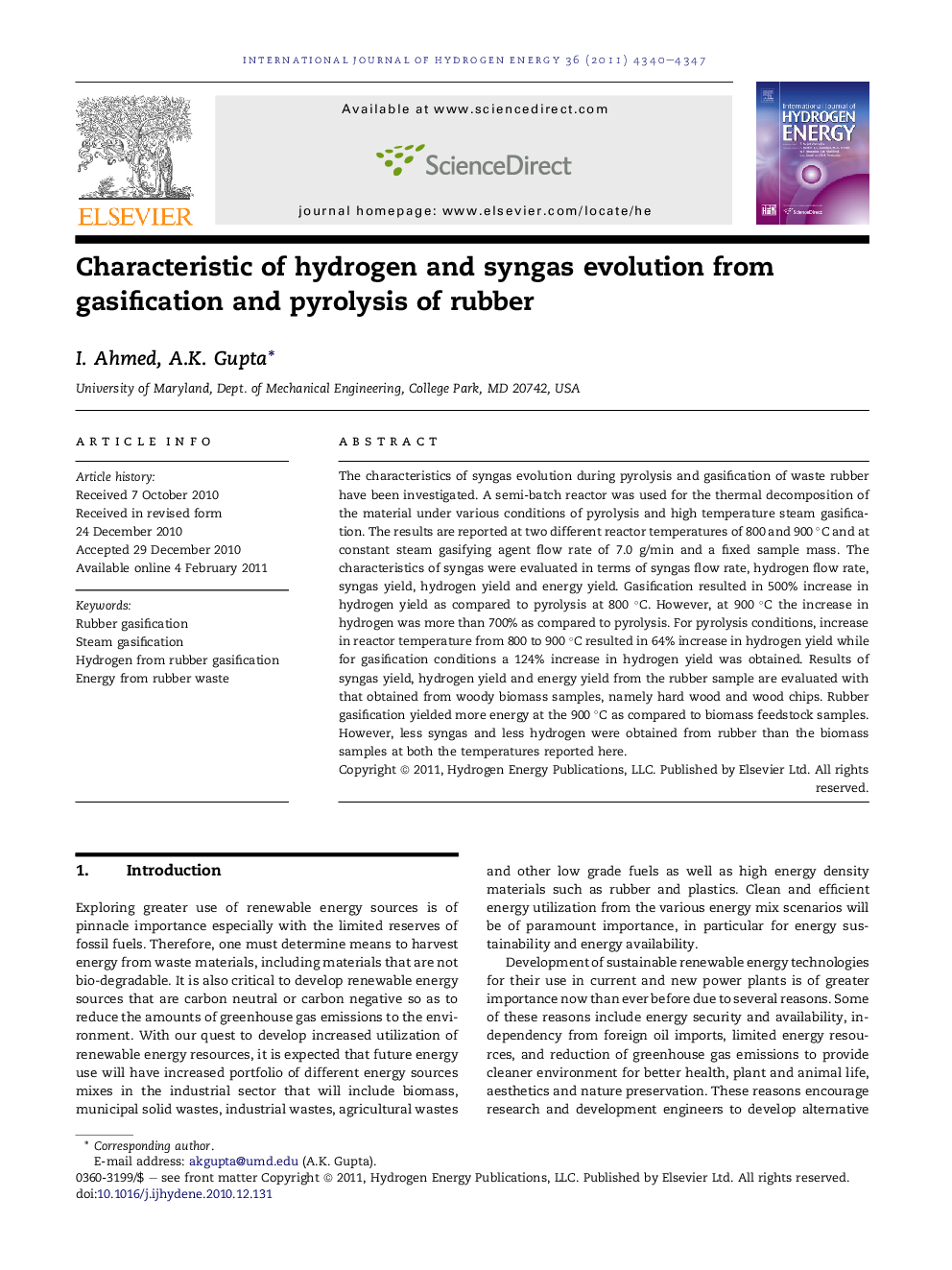| Article ID | Journal | Published Year | Pages | File Type |
|---|---|---|---|---|
| 1276219 | International Journal of Hydrogen Energy | 2011 | 8 Pages |
The characteristics of syngas evolution during pyrolysis and gasification of waste rubber have been investigated. A semi-batch reactor was used for the thermal decomposition of the material under various conditions of pyrolysis and high temperature steam gasification. The results are reported at two different reactor temperatures of 800 and 900 °C and at constant steam gasifying agent flow rate of 7.0 g/min and a fixed sample mass. The characteristics of syngas were evaluated in terms of syngas flow rate, hydrogen flow rate, syngas yield, hydrogen yield and energy yield. Gasification resulted in 500% increase in hydrogen yield as compared to pyrolysis at 800 °C. However, at 900 °C the increase in hydrogen was more than 700% as compared to pyrolysis. For pyrolysis conditions, increase in reactor temperature from 800 to 900 °C resulted in 64% increase in hydrogen yield while for gasification conditions a 124% increase in hydrogen yield was obtained. Results of syngas yield, hydrogen yield and energy yield from the rubber sample are evaluated with that obtained from woody biomass samples, namely hard wood and wood chips. Rubber gasification yielded more energy at the 900 °C as compared to biomass feedstock samples. However, less syngas and less hydrogen were obtained from rubber than the biomass samples at both the temperatures reported here.
